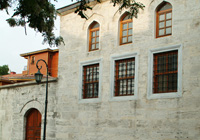 İdris-i Bitlisi Sıbyan Mektebi
İdris-i Bitlisi Sıbyan Mektebi
This masterwork,belonging to the period predates Mimar Sinan,is the first educational institution established in all cities and towns of Ottoman Empire.As in many foundations in Ottoman Empire,these schools,which correspond to “nursery schools” in today’s context,were constructed in the form of charitable foundations thanks to some benefacters.This building was constructed by an important Ottoman historian İdris-i Bitlisi,who took charge in East Anatolia in Arabia as kazasker(military judge), (in the period of Yavuz Sultan Selim) on the purpose of charity.
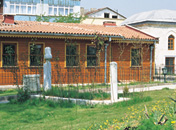
The Grave of Mevlevi Iskender Dede
Once upon a time,in this garden,full of great sycamores and cypreases, there was also a zaviye (small dervish lodge) called with the name of Iskender Dede,who dided in 1589 ( 997 moslim calendar)
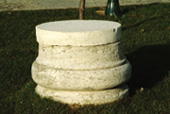 Wishing Well
Wishing Well
The fame of this well, known as wishing well;has survived until today .In Evliya Çelebi’s Seyahatname( a travel book) the well is mentioned in details.It is known that there is a “musalla” ( a place to pray to perform salah) nearby the well.Rumour has it that,if a person ,who lost something or somebody,had performed salah there and talked to the well,the well used to answer and tell where the lost thing was.
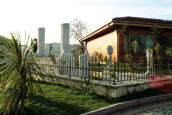 The Cemetery Of Atçıbaşı Ali Ağa
The Cemetery Of Atçıbaşı Ali Ağa
This cemetery is composed of the sepulchers of Ali Ağa,who fulfilled a duty as atçıbaşı of the palace,his son,daughter and grandchild .(atçıbaşı is a person who is responsible for all horses of the palace) Also the grave of Zevki Kadın,one of the wives of Osman III,which couldn’t survive until today except its gravestone takes place among these graves.
Tomb of Çolak Hasan Dede
This tomb,the oldest masterwork of the neighbourhood,is made of ashler and composed of two units.On the right side of the tomb,out in the open,there is a sepulcher of a müderris (Islamic professor of his age) whose occupation can be elicited from the gravestone.Inside the building,on the left hand,there is a small prayer room also can be called çilehane and on the right side there is a grave estimated to be Çolak Hasan Dede’s grave but there’s no confirmation for it.It is ascertained with the written records,Çolak Hasan Dede also had a small mosque built somewhere in the region of Sultan Ahmet Küçükayasofya ,where in he was a soldier.
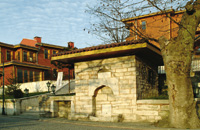 Drinking Fount of Rayet Keşan Kalfa
Drinking Fount of Rayet Keşan Kalfa
The drinking tap,made of ashlar,is in the form of Turkish fount architecture.It’s known that,there was a tap of İdris-i Bitlisi on the location of this one,but later on it lied in ruins.The masterwork is called with this name as Rayet Keşan Kalfa,one of the bondwomen of Sultan Abdülaziz,had it restored in 1858.
Cistern
It’s clear that,the cistern in the middle of the Turquhouse Hotel garden ,the historical characteristics of which are properly preserved, is a historic artifact of Byzantine period.As this zone is up the hill,the cistern,which enables the snow water gather easily,was connected to the local taps of neighbourhoods in Mehmet the Conqueror’s period with the aim of providing the people fresh water.

